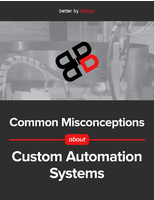ASHRAE investigates photocatalytic oxidation technology.
Press Release Summary:
To improve understanding, research from ASHRAE will provide method for analyzing by-products from photocatalytic oxidation. In best-case scenario, all contaminants removed are converted to non-threatening levels of carbon dioxide and water. However, contaminant conversion process has potential to release chemicals that are less desirable than ones being removed from air stream. Research will lead to air cleaners that have both low energy operation and low release of chemicals.
Original Press Release:
ASHRAE Research Investigates Photocatalytic Oxidation Technology
ATLANTA - Air-cleaning equipment featuring new photocatalytic oxidation technology is used to remove contaminants from indoor and outdoor air.
But does this technology also introduce chemicals into the air?
New research from ASHRAE will provide a method for analyzing by-products from photocatalytic oxidation (PCO) air cleaning devices, improving understanding of the technology.
"This research will lead to a new generation of air cleaners that have both low energy operation and low release of chemicals," said Carolyn Kerr, a member of ASHRAE's Technical Committee (TC) 2.3, Gaseous Air Contaminants and Gas Contaminant Removal Equipment, which is overseeing the project. "This will assist in providing an optimal indoor environment for buildings, vehicles and facilities for comfort, health and productivity of occupants."
PCO, used for removal of gaseous contaminants, requires less energy to operate than many existing filter systems, according to Kerr. In the best-case scenario, all of the contaminants removed are converted to non-threatening levels of carbon dioxide and water. However, the contaminant conversion process has the potential to release chemicals that are less desirable than the ones being removed from the air stream, Kerr said.
The research will investigate a variety of stand-alone and in-duct air cleaners using PCO technology, challenging them with several airborne contaminants to identify chemicals released.
ASHRAE Research Project 1457, By-Product Production from Photocatalytic Oxidation Associated with Indoor Air Cleaning Devices, was awarded to University of Wisconsin. The $124,889 project is expected to take two years to complete.
The project is one of 12 ASHRAE recently approved for funding, totaling $1.4 million. Others are:
Modeling Low Velocity Large Scale Fluctuating Flows in Ventilated Spaces at Transitional Reynolds Numbers, RP-1271, Purdue University, two years, $120,156, sponsored by TC 4.10, Indoor Environmental Modeling.
Particle Counter Specification for Use with Filter Performance Test Standard ANSI/ASHRAE Standard 52.2-1999, RP-1287, RTI International, 15 months, $101,853, TC 2.4, Particulates air Contaminants and Particulate Contaminant Removal Equipment.
Modeling VOC Sorption of Building Materials and Its Impact on Indoor Air Quality - Phase II, RP-1321, Tsinghua University, two years, $109,035, TC 4.10.
Stability and Accuracy of VAV Box Control at Low Flows, RP-1353, Drexel University, 18 months, $99,153, TC 1.4, Control Theory and Applications.
Method of Test to Evaluate Field Performance of Commercial Kitchen Ventilation Systems, RP-1376, University of Minnesota, one year, $94,048, TC 5.10, Kitchen Ventilation.
Recommendations Based on Field Testing and Analysis of High-Altitude Installations of Gas-Fired Boilers and Water Heaters, RP-1388, Gas Consultants, one year, $48,454, TC 6.10, Fuels and Combustion.
Study of Carbon Dioxide Condensation in Chevron Angle Plate Geometry Exchanger, RP-1394, Washington State University, two years, $89,315, TC 8.5, Liquid-to-Refrigerant Heat Exchangers.
Comparison of Vertical Display Cases, RP-1402, University of Missouri, two years, $104,746, TC 10.7, Commercial Food and Beverage Cooling Display and Storage.
Experimental Evaluation of Two-Phase Pressure Drops and Flow Patterns in U-Bends for R-134a, R-410a and Ammonia, RP-1444, Swiss Federal Institute of Technology, three years, $179,000, TC 1.3, Heat Transfer and Fluid Flow.
Experimental Validation of Modeling Tools for Mixed Gas Refrigeration Cycles, RP-1472, University of Wisconsin, one year, $50,000, TC 10.4, Ultra-Low Temperature Systems and Cryogenics.
Development of Typical-Year Weather Files from the ISH Database of Historical Weather Data from 2,500 International Locations, RP-1477, White Box Technologies, one year, $62,551, TC 4.2. Climatic Information.
ASHRAE, founded in 1894, is an international organization of some 50,000 persons. ASHRAE fulfills its mission of advancing heating, ventilation, air conditioning and refrigeration to serve humanity and promote a sustainable world through research, standards writing, publishing and continuing education.
Contact: Jodi Dunlop
Public Relations
678-539-1140
jdunlop@ashrae.org
1791 Tullie Circle NE
Atlanta, GA 30329




